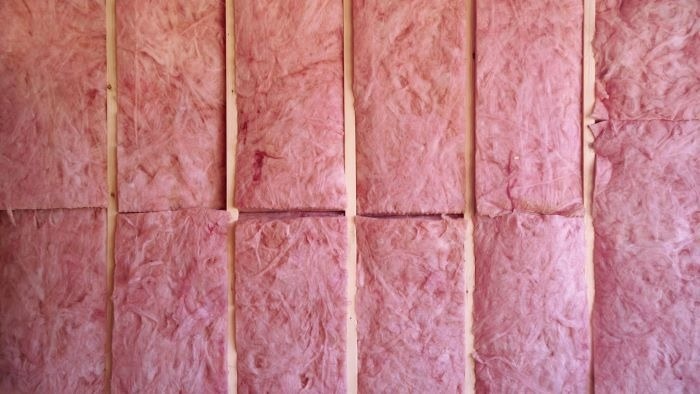A group of researchers from Drexel University and Université Catholique de Louvain have discovered that MXenes, a material type known for its excellent electrical conductivity, have very low thermal conductivity. This discovery calls into question the conventional relationship between electrical and heat conduction. The discovery may result in advancements in energy storage technologies, performance clothing, and building materials. The study was published in the journal ACS Nano.
 The discovery that MXenes, a family of two-dimensional materials known for their electrical conductivity, also have low thermal conductivity could one day help to improve the performance of building materials, performance apparel, and energy storage devices. Image Credit: Drexel University
The discovery that MXenes, a family of two-dimensional materials known for their electrical conductivity, also have low thermal conductivity could one day help to improve the performance of building materials, performance apparel, and energy storage devices. Image Credit: Drexel University
In daily life, materials like metals that are good electrical conductors also tend to conduct heat. For example, a ceramic mug stays cool, while a metal spoon in a hot cup of tea gets hot. This is because good electrical conductors typically conduct heat well as well.
MXenes are a class of two-dimensional materials first discovered at Drexel in 2011. According to the research, they exhibit an uncommon combination of low thermal conductivity and high electrical conductivity.
The research team believes that MXene materials' performance as an ultrathin thermal insulator may be their most promising feature for future applications, even though they have demonstrated exceptional qualities among two-dimensional materials in a variety of areas, such as strength, the capacity to filter chemicals, and the ability to block and trap radiation selectively.
Thermal insulation of this magnitude, which is also 100 to 1,000 times thinner than a human hair, would simply have been unimaginable until now. This could change the way we insulate buildings and industrial equipment, and make thermal clothing, just to name a few exciting possibilities.
Yury Gogotsi, Ph.D., Distinguished University and Bach Professor, Drexel University
Gogotsi was a leader in the development of thermally insulating MXene.
Research on MXene films with extremely low heat (infrared) emission was first published and patented by Gogotsi as early as 2020. However, until his Belgian colleagues employed a scanning thermal microscopy technique to measure heat transfer, or local thermal transport, on the surface of individual titanium carbide MXene flakes, the mechanisms underlying its exceptional thermal insulation were not completely understood.
As it came into contact with the MXene flakes, a resistor probe that served as a heat source and temperature sensor scanned their surface, recording the temperature. This created a map showing the thermal resistance of the MXene sample's surface and the heat flow into it.
The map showed something surprising: The material maintained a nearly constant surface temperature throughout the test instead of rapidly heating up when the probe touched it.
Surprisingly, the thermal conductivity of the sample was almost one order of magnitude smaller than the value predicted by the laws that govern solid-state physics. At the same time, the heat loss of the titanium carbide MXene sample is a full two orders of magnitude smaller than common metals, like low-emission gold, aluminum, and steel. Which means that it could be an excellent material for thermal isolation and shielding.
Pascal Gehring, Ph.D., Study Lead Author, Université catholique de Louvain
The team concludes that the material's low thermal activity is probably caused by its structure, though more research is required to confirm the precise mechanisms at play. Heat is normally transferred by two main processes: electron motion and phonons, which are vibrations of the material's lattice structure.
Strong coupling between these two pathways considerably lowers total heat transport in the MXene material. The titanium carbide MXene's low emission and effective infrared radiation reflection, documented in earlier studies by the Drexel team, most likely reflect a similar mechanism.
According to Gogotsi, the material can create a temperature drop of over 100 °F because it can block infrared radiation without transferring heat. This implies that buildings could be insulated in the winter and require significantly less air conditioning in the summer with just a spray coating of the material, as suggested by related research recently published in Nature Communications.
This could be a very exciting development for worldwide energy conservation efforts. Better insulation for buildings and transportation could result in enormous energy savings and minimize unintended heating of the environment. Our preliminary findings already indicate that a thin coating of MXene insulation could perform as well as an inch-thick mineral felt with aluminum insulation currently used in construction. But we are confident that with further development MXene-based thermal insulation can exceed all known materials.
Yury Gogotsi, Ph.D., Distinguished University and Bach Professor, Drexel University
According to the researchers, the material may also be used to coat furnaces and other thermal equipment, possibly replacing polished stainless steel casings and ceramic insulation, insulating ovens, and even creating new protective shielding for aerospace vehicles.
The next stage of this study will involve testing additional MXene varieties and investigating the insulating capacity of MXene coatings on diverse substrates.
The research was funded by the US National Science Foundation, the National Fund for Scientific Research (Belgium), the Federation of Wallonie-Bruxelles (Belgium), and the European Union.
Co-authors include Gogotsi, Tetiana Parker, and Asaph Lee, from Drexel; Pascal Gehring, Jean Spiece, and Yubin Huang from UCLouvain.
Journal Reference:
Huang, Y., et al. (2024) Violation of the Wiedemann–Franz Law and Ultralow Thermal Conductivity of Ti3C2Tx MXene. ACS Nano. doi.org/10.1021/acsnano.4c08189.